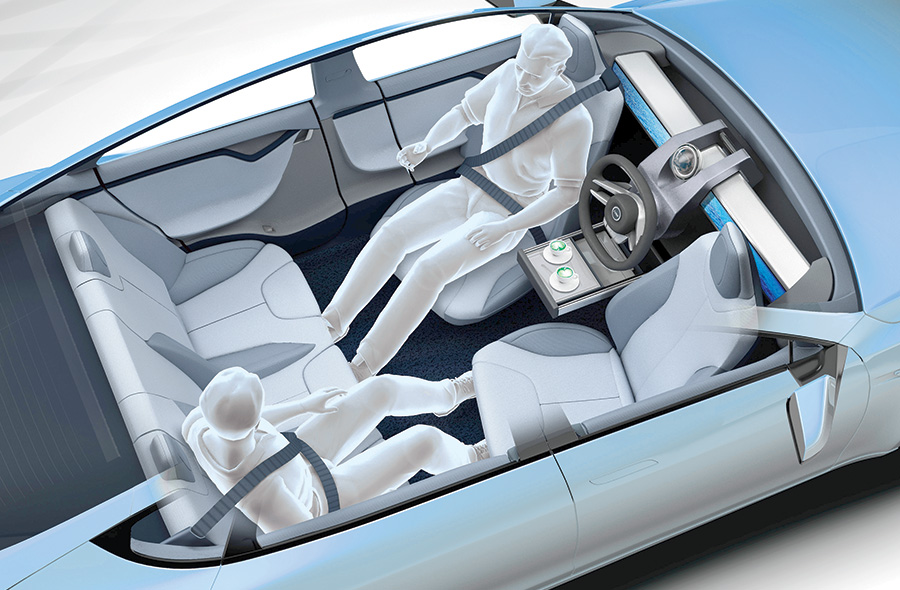
The rate of technological change is staggering. Today, thanks to the Internet’s commercial birth roughly 20 years ago, over one-third of the world is connected in ways never dreamed about.
And the Internet is only what experts consider the second of four tech-inspired tectonic shifts that we will experience in our lifetime —the first was the microprocessor that spawned the PC in the 80s, next was the commercial Internet in the 90s, the current wave of innovation is mobile computing, and we’re coming into the age of connected things and wearable technologies.
My children are grown, out of the house (well, nearly …), and three of four are thoroughly steeped in tech. One is building alliances in the massively-scalable cloud storage arena, another recently graduated with a degree encompassing tech-integrated marketing and graphic design, and a third works for me in personal cloud-data services. When they speak of the future, they comfortably describe a life of self-driving cars, cashless transactions with nothing more than a biometric identifier, and whole new economies resting on crypto-currencies and shared — rather than owned — personal property. At times, we exchange ideas regarding how technologies in development today will impact our daily lives — and what might become the “how did you ever live without” items their children will enjoy (think: smartphones, GPS, digital music, DVRs…). We posit how their children will wonder why we lived with life-threatening disease, how intercontinental travel took the greater part of a day, why we ever carried around “change,” what an ATM was, and how boring our entertainment would have been without complete sensual immersion.
Today, a similar game is being played at the highest levels in business around the globe. Some prescient leaders in sleepy industries are waking to the enormous changes that at once threaten their existence while presenting unprecedented opportunity. Perhaps never in the history of mankind has the pace of change and technological advance been greater. The interconnectedness of one-third of the world’s populace, combined with exponentially-increasing innovation in all sectors of industry, science, medicine, education, finance and entertainment, is fueling new business models, legal constructs (like self-policing contracts), product offerings and new ways to think about money, lending and the roles of stolid institutions like banks and insurers.
For some, the rapid change portends positive disruption, and they’re taking steps to embrace the emerging trends. My company, Trōv, has the honor to be partnered with a large public financial services institution whose leadership earlier this year engaged in a practice they call futureproofing. Its purpose was to juxtapose their present-day businesses against a future radically reshaped by technological advances. Their hope from the exercise was to identify practices, models and partnerships that may render their business irrelevant in coming decades. To accomplish the outcome, they spend a good deal of time defining scenarios that are likely to emerge in the next few decades. These scenarios are described elaborately, and take into account present technological advances.
One such future scenario includes the mass adoption of autonomous transportation (from private automobiles to commercial trucking). They draw numerous conclusions from a future that assumes the majority of cars and trucks on the road are self-driving — requiring little-to-no intervention from humans. When autonomous transportation is mainstream (the first fully-autonomous cars will rollout late in this decade), computer-executed acceleration and braking will help to ensure a smooth flow of traffic and reduce fuel consumption and emissions. Moreover, cars that communicate with each other will travel more closely together and therefore take up less road space. There would be fewer traffic jams and the associated costs would be reduced. Finally, the lower risk of accidents caused by human error would have a significant impact on insurance.

For an insurer whose top line relies heavily on revenues generated by selling protection against the inevitability of automobiles damaged from wrecks, a “wreckless” future would exact a heavy toll on their revenue. Although fully-autonomous cars are still a decade away, futureproofing their businesses for this likelihood is prudent, intelligent and directive. A result of their practice has been a profound willingness to embrace — rather than resist — potentially disruptive technologies and business practices. Investments in technologies that usher in the change they forecast are a great indicator of a healthy organization that will benefit from, rather than be disassembled by, the future.
“Many will go here and there to increase knowledge. Then I, Daniel, looked, and there before me stood two others, one on this bank of the river and one on the opposite bank. One of them said to the man clothed in linen, who was above the waters of the river, “How long will it be before these astonishing things are fulfilled?”
Perhaps we can learn from this process personally. Not just business, but our lives, are bound to be affected by the pace of technological advances — most will be positive, adding to both the quality and quantity of our lives. Advances in medicine will help us live longer, with less pain; technological leaps in education will give our kids and grandkids affordable access to massive knowledge bases and enable rapid advancement in areas of their choosing. Immersive communications and data infrastructure advances (some countries are now laying pipes supporting 100x the data speeds we enjoy today) will increase the effectiveness of telepresence — giving us all greater flexibility in where we choose to live, and entertainment choices will grow evermore broad and engaging.
But like the business practices of my institutional partner, we should consider the potential impact of adopting (or ignoring) the wave of technological advances that are upon us. We might ask, in a future that is radically different than today, what decisions are we making now that could be rendered shortsighted in the not-too-distant future? For example, if life expectancy due to medical advances increases by 10 years, am I planning for the financial implications of forestalled mortality? Since communications and transportation options are improving rapidly, should I be making location decisions bounded by the present limitations, or consider less permanence for the time being? If my decisions about college are bound to an institution in a particular locale, what if my kids could get a quality education but live anyplace? And these are just some of the most obvious implications.
Futureproofing is a prudent practice for industry to employ to avoid disaster or extinction from technology’s inexorable advance, and a personalized version of it will serve us, as well. As we become more familiar with emerging technologies that will impact our everyday lives, we do well to ask the same question as Daniel: how long will it be before these astonishing things are fulfilled? Even without his Divine imperative, the answer we’re likely to foretell is: sooner than we ever expect.

